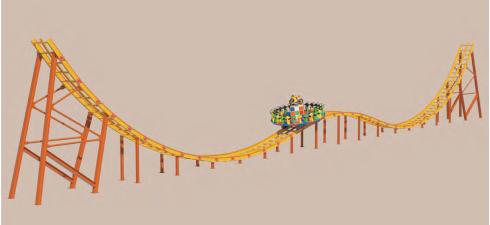Creative Designs for Exciting Roller Coaster Blueprints Engineering Thrilling Amusement Park Experiences
The Art and Science of Roller Coaster Blueprints
Roller coasters are more than just thrilling rides; they are a complex fusion of engineering, art, and physics. Designing a roller coaster involves meticulous planning and technical expertise, starting with the creation of detailed blueprints. These blueprints serve as the foundation for bringing the exhilarating experience of a roller coaster to life, combining creativity with scientific principles to ensure safety and excitement.
At the heart of roller coaster design is the understanding of dynamics and forces. Designers must carefully calculate the forces that will act on the ride and its passengers. This includes gravitational forces, centripetal forces, and the effects of inertia. Computer-aided design (CAD) software is often utilized to create accurate digital representations of the ride, allowing engineers to simulate how the ride will perform before any physical construction begins. These simulations can reveal problems that may arise, making it easier to modify the design for optimal safety and thrill.
The Art and Science of Roller Coaster Blueprints
Beyond the physics, aesthetics play a crucial role in roller coaster design. The visual impact of a ride can draw crowds and enhance the overall theme of the amusement park. Designers often incorporate themes into their blueprints, aligning the ride’s structure with the surrounding environment. For example, a jungle-themed coaster might feature vibrant colors and naturalistic elements, while a space-themed ride may use sleek lines and metallic finishes. Artists and engineers collaborate to ensure that the coaster not only performs well but also captivates the imagination of potential riders.
roller coaster blueprints

Safety is paramount in roller coaster design. Blueprints are scrutinized to meet strict industry regulations and standards set by governing bodies. Safety features like harnesses, emergency brakes, and redundant systems are fundamental components that must be incorporated into the design. Engineers conduct thorough analyses to test the structural integrity of the ride, ensuring it can withstand not only the impacts of the ride experience but also harsh weather conditions over time.
Once the blueprints are finalized, they serve as a roadmap for construction teams who will bring the roller coaster to life. Precision is critical during this phase, as every segment must be executed according to the specifications in the blueprint. Sections of track are assembled with meticulous attention to detail, ensuring a seamless experience for riders.
Throughout the entire process, from conceptualization to execution, communication between designers, engineers, and construction teams is vital. Modern technology aids this collaboration, allowing for real-time updates and adjustments. The result is a roller coaster designed to deliver thrills safely while also providing a visually stunning addition to the amusement park landscape.
In conclusion, roller coaster blueprints are an extraordinary intersection of engineering, art, and safety. The intricate designs transform thrilling concepts into reality, capturing the spirits of adventure-seekers and delivering unforgettable experiences. Each coaster tells a unique story, built upon the foundational blueprints that ensure safety, excitement, and the perfect rush of adrenaline. This intricate process serves as a testament to human creativity and technical prowess, crafting rides that continue to inspire awe and joy for generations to come.
-
Top Amusement Equipment Manufacturer Rock n Roller Coaster & Carousel ManufacturerJun.10,2025
-
World's Scariest Roller Coaster Experience Ultimate Thrill & HeightJun.10,2025
-
Ultimate Thrill Ride Roller Coaster High-Speed, Safe AdventureMay.30,2025
-
Carousel Mansfield Rides Premium Indoor & Event SolutionsMay.30,2025
-
T3 Roller Coaster High-Thrill, Safe Ride for Theme Parks & ResortsMay.30,2025
-
Roller Coaster Cart Design Custom-Built & High-Safety Thrill Ride VehiclesMay.30,2025
